10 Hacks To Optimise Category Pages for eCommerce Websites
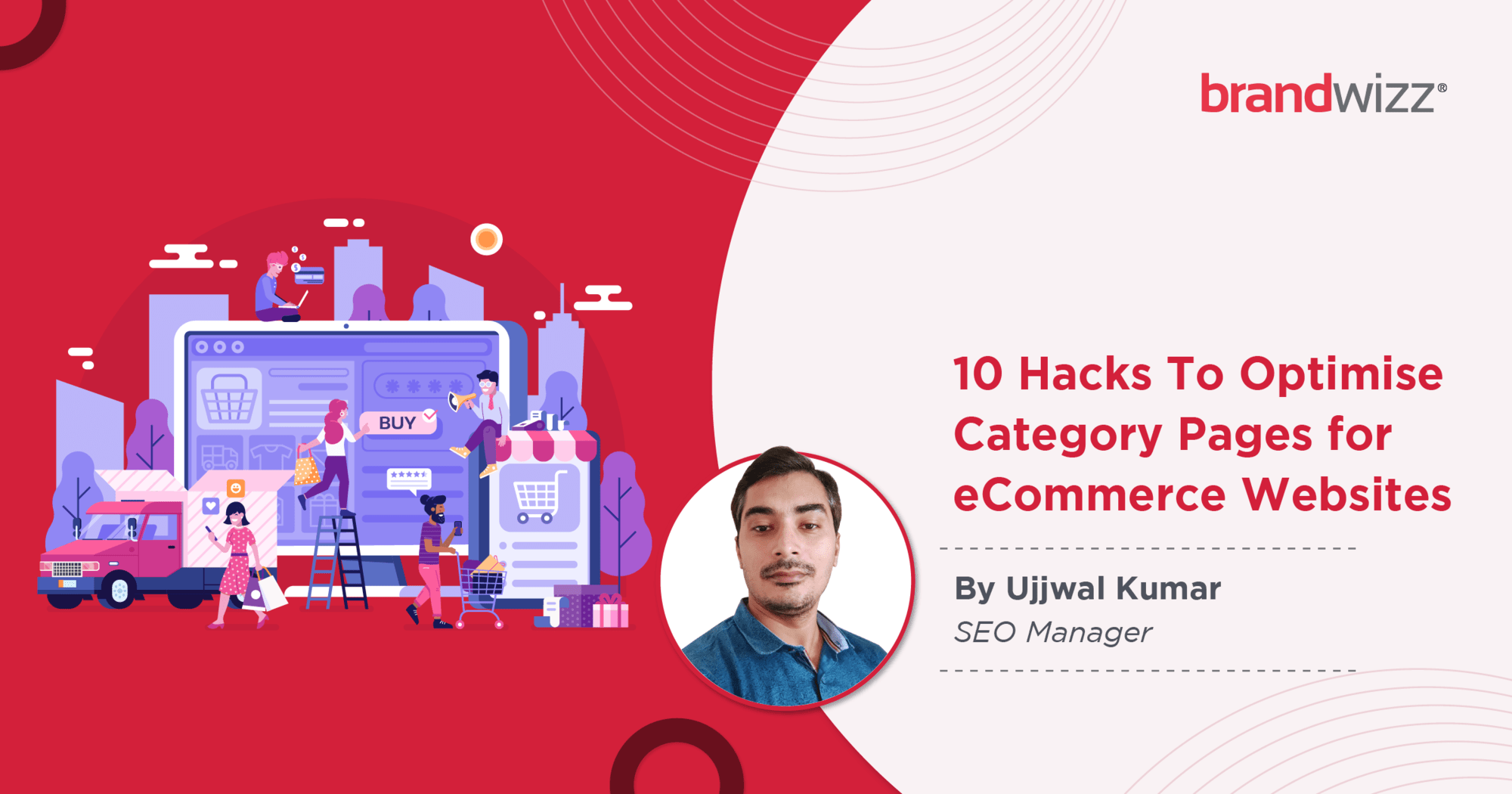
On a YoY basis, the Indian eCommerce sector is expected to grow by ~39% this year. By the end of 2027, the number of online buyers in the country will zoom past the 440 million mark (from <200 million in 2021). The growth of eCommerce – both in India and abroad – over the last few years – has been truly remarkable, with more and more people relying on the World Wide Web to find the products/services they are looking for. Unlike what the case for traditional brick-and-mortar stores is, the potential customer base for online stores is unlimited – and that’s exactly why any top SEO agency in Kolkata (that offers eCommerce services) emphasises the importance of the discoverability of any online store for its success in the long-run.
According to a recent report, nearly 88% of buyers search for products on the internet. If a custom online store managed to register high traffic figures – only for visitors (leads) to wander away after coming across poorly-designed, non-optimised ‘category pages’, that would be a real waste. When properly optimised, category pages of an eCommerce store can generate 410% more traffic than ordinary ‘product pages’. It all boils down to knowing how these all-important category pages need to be set up, and we will focus on that in what follows:
Pay Attention To Category Headings and Page Metadata
Creating the proper ‘context’ and ‘relevance’ of eCommerce category pages is of paramount importance. This has to be done by playing around with the category headings. For buyers, these headings serve as indicators regarding whether they have indeed landed on the ‘right’ page. Make sure that the heading includes a keyword (for the search engines).
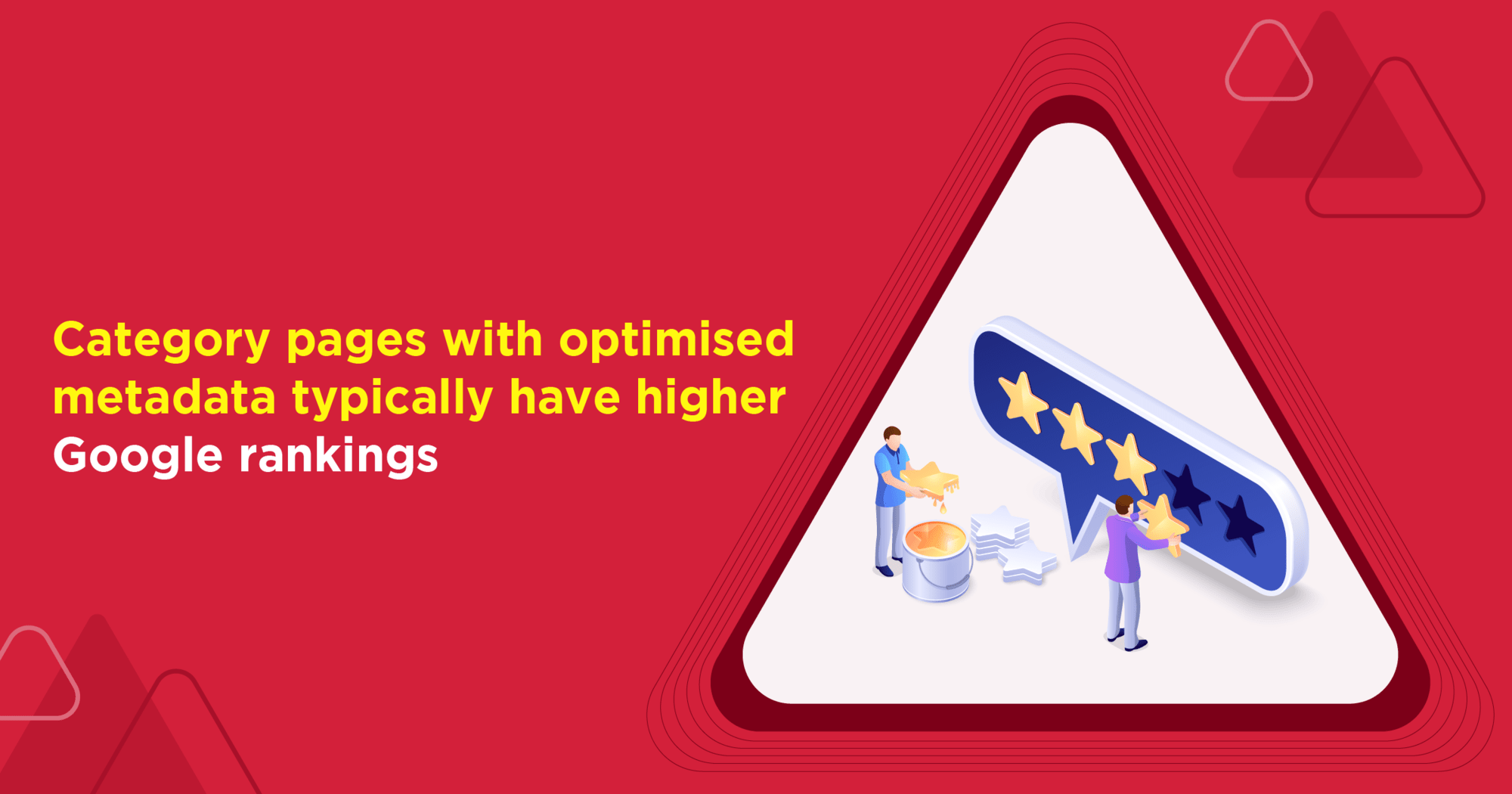
Optimized Category Page helps Ecommerce Website to get Ranked in SERP
When it comes to online buying, visibility matters in a big way on the World Wide Web. This is precisely where the focus shifts to eCommerce SEO. Set up the page metadata correctly – by preparing the ‘title tag’ and the ‘meta description’ sections with care. Category pages with optimised metadata typically have higher Google rankings – paving the way for more traffic, engagement and conversions.
Use Keywords In A Smart Manner
Keyword research is something that needs to be done carefully, while preparing eCommerce category pages. As any good SEO agency would confirm, it is vital to understand the ‘search intent’ of online buyers (i.e., target audience) – and choose keywords accordingly. Ideally, keywords that are too broad, and are generally used for information-gathering purposes, should be avoided. The ranking difficulty (competition) and the average search volume of keywords should also be factored in. The KWs chosen should guide buyers, who already have a strong intention to purchase from your online store.
In this context, it is also a good idea to be aware of the types in which keywords can be classified. For the category pages of eCommerce portals, transactional or commercial keywords are generally the most effective. Navigational keywords and informational keywords can also be used – but preferably for more informative pages. Use the keyword(s) in the title and page copy judiciously.
Create Helpful Content To Drive Engagement
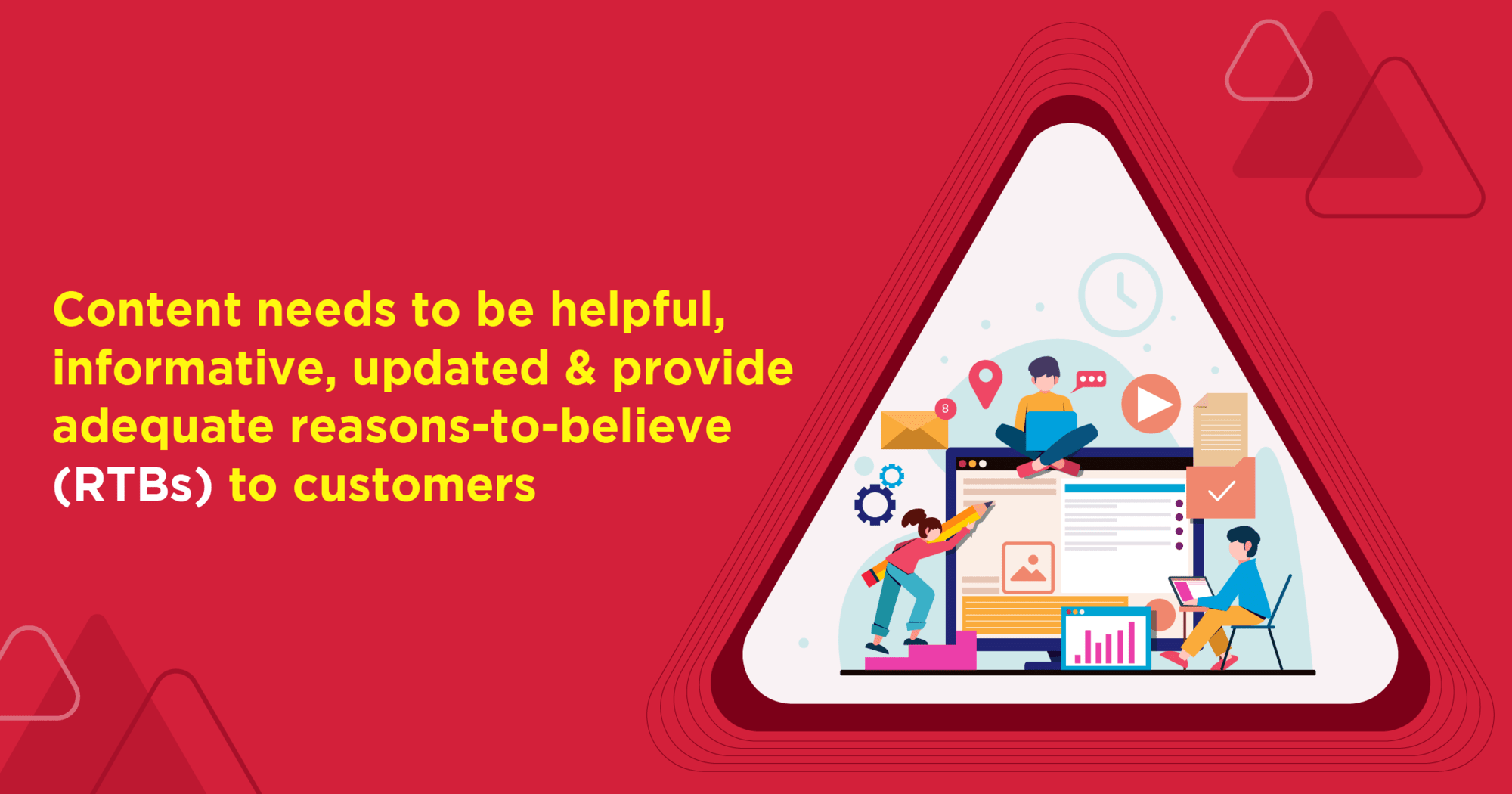
Informative & Quality Content Update helps to Drive Traffic to the Website
The content that you place in your eCommerce category pages can make or break a sale. Remember, a person who has arrived on this page already has the ‘intent to purchase’ – and the page content needs to guide him/her towards completing the purchase. Put in another way, the content needs to be helpful, informative, updated, and provide adequate reasons-to-believe (RTBs) for converting a potential customer to an actual buyer.
The size of the content on the category pages also needs to be considered. Digital marketers and eCommerce specialists recommend keeping the content precise, to-the-point, and be convincing enough to reassure buyers that they are indeed making the right choice. According to a recent report, a large portion of category page content (up to 90%) – while not bad per se – is often unnecessary. The most important part of your message should be present ‘above the fold.’
Must Read- 6 Ways to Produce Engaging Content for Your Business
Link Different Categories Internally
On both product listing pages (PLP) as well as category listing pages (CLP), there should be internal linking to other, relevant categories. On several eCommerce sites, it is possible to automate the linking across parent-child categories (chances of ‘orphan categories’ are also minimised). With the help of internal linking, you can direct buyers on the section(s) they should visit next. In this way, the ‘high-opportunity’ category pages can be leveraged to the fullest extent.
Contextual relevance should be prioritised while setting up the category pages of online stores. Instead of randomly linking to other internal pages, understand which products/categories people might be interested in visiting. Keep in mind that the overall user-experience (UX) can be negatively affected. By conducting regular link audits, you can also make sure that there are no broken links. eCommerce stores with intuitive page structure have the best conversion rates.
Check The Loading Time Of Your Category Pages
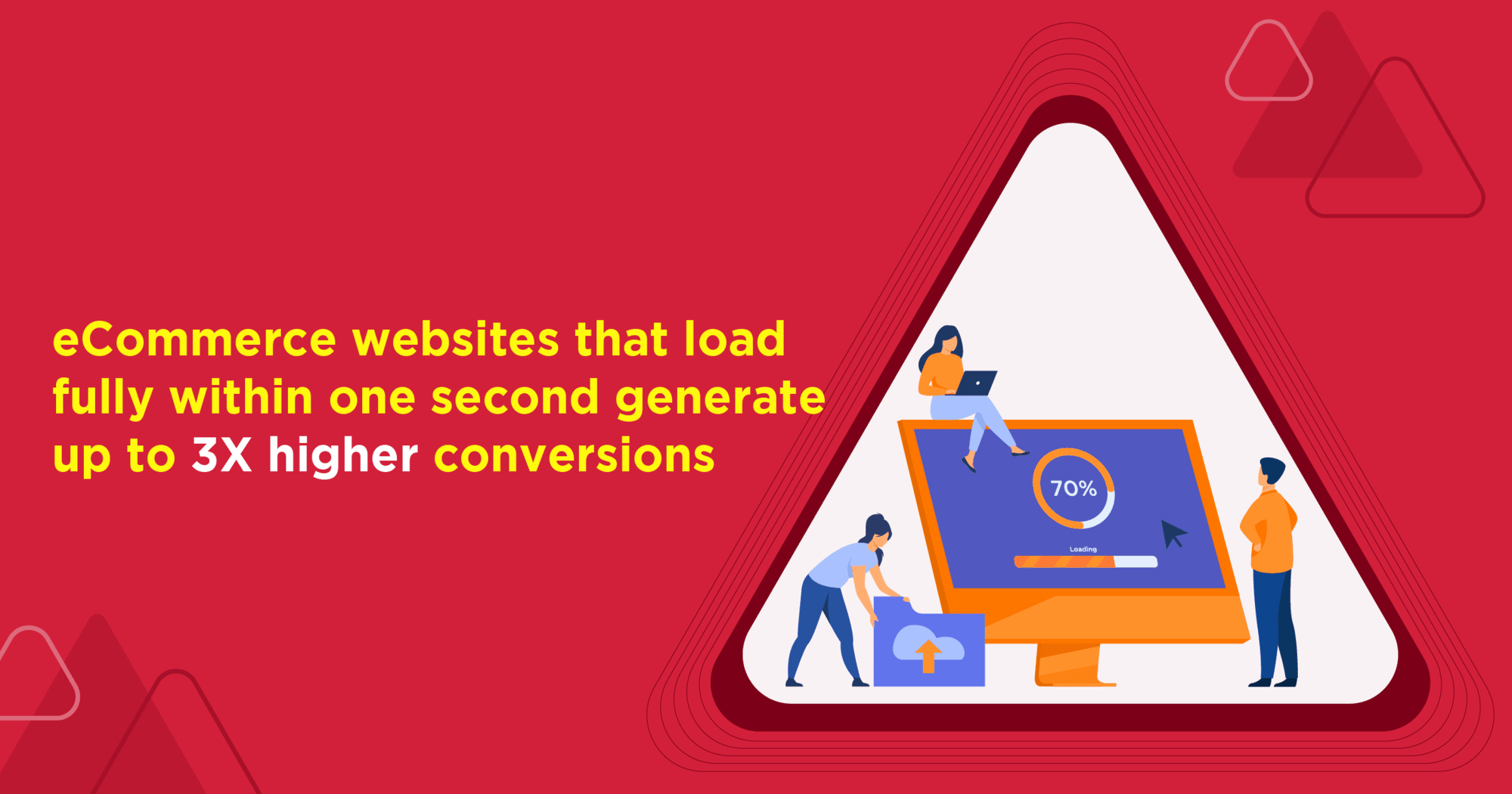
Lesser Page Loading Time Ensures Better Ecommerce Conversion
On average, eCommerce websites that load fully within one second generate up to 3X higher conversions then relatively slow-loading websites. Any top SEO agency in Kolkata recommends page-speed testing at regular intervals – particularly for the category pages. As per a recent insight, for every additional second of loading time, conversion drops by nearly 4.5%. Online buyers are not patient, and your store cannot afford to make them wait.
A common cause behind slow and buggy eCommerce loading pages is the presence of too many products in them. To prevent these pages from becoming ‘too heavy’, developers often implement lazy loading or pagination options. Having a ‘View Products’ button – and keeping more products available on-click behind it – is also effective. As an online business grows, it also has to be ensured that the scalability of the online stores is not hampered in any way.
Make Sure That The Category URLs Are Optimised
When it comes to optimising the URLs of category pages, there is a simple rule of thumb: there should not be any extra special characters and/or information – and visitors should be able to understand what to expect from the page, from the URL itself. Avoid using misleading category URLs, which can lead to high bounce rates. For eCommerce sites with Woocommerce and WordPress, having a category slug is essential.
Before finalising the category page URLs of an eCommerce site, it is important to understand how the products/services can be grouped together (and if such grouping is at all possible). The default URL should then be changed accordingly. Keep the URLs short and SEO-friendly, to ensure greater visibility. Ideally, the URL structure should be built on the basis of parent/child categories. Do not change category page URLs frequently.
Make Good Use Of Product Images
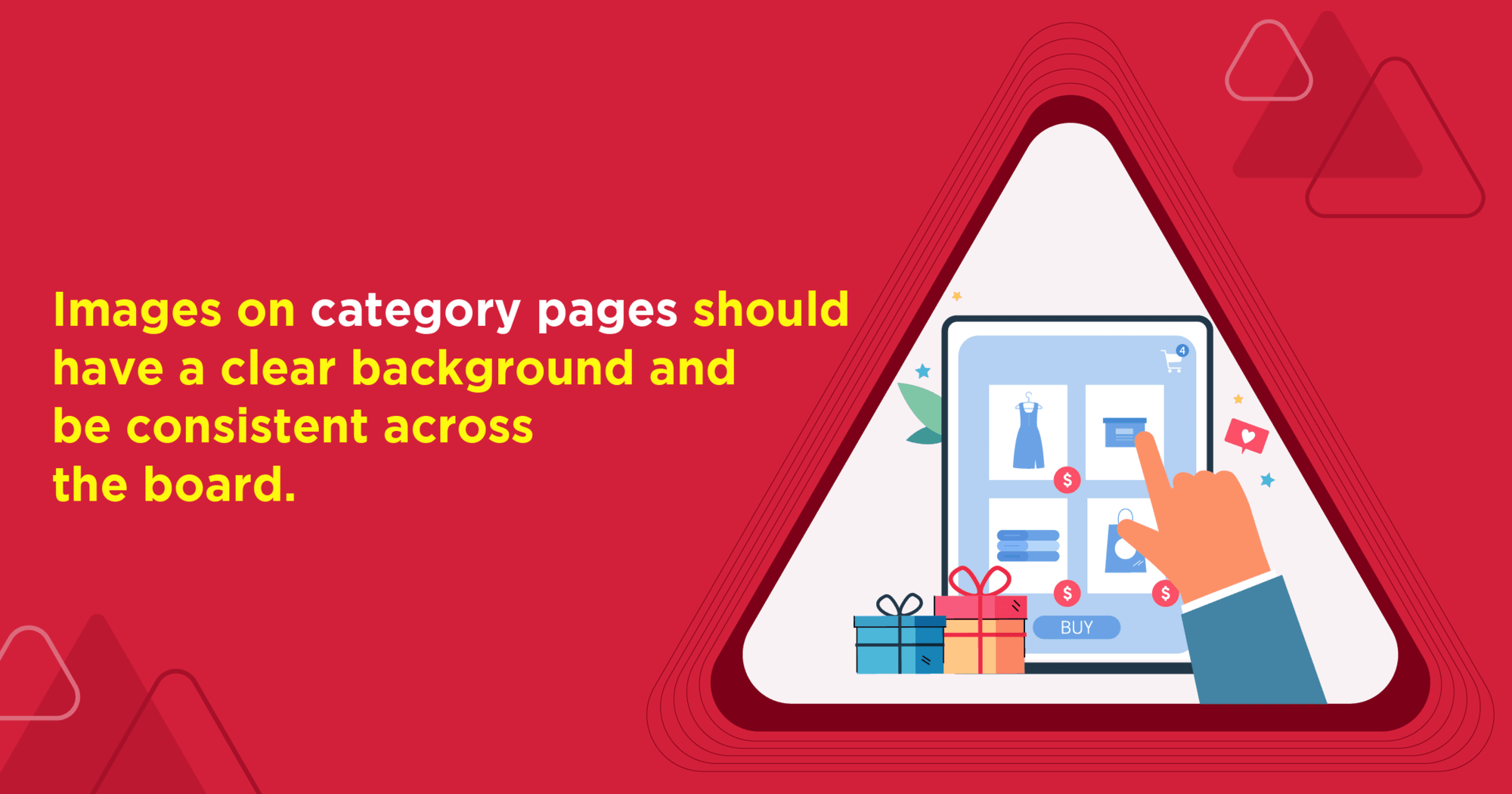
Image Optimization- High Quality Images with Clear Background Must be Consistent Across the Website
In eCommerce SEO optimisation, the way in which product images are used plays a key role. The images you put up on the category pages should have a clear background – and be consistent across the board. You can consider having zoom-in options, display short product videos, and use different angles to showcase the products/services. However, there has to be complete consistency in the size of the images and the manner in which they are presented. The functionality and appearance of the product images should be uniform.
There are different ways in which you can use images on your eCommerce site. For instance, if you have an online apparel store, you have the option of displaying only the clothes, or demonstrating them on models. Double-check to ensure that the images are not affecting the loading speed of the category pages. When placed in boxes, product images should take up 85% – 90% of the total space. Use ‘alt’ tags for all images.
Don’t Forget CTA; Share Curated Information
Greater urgency leads to higher demands – this holds true for eCommerce business. In addition to the ‘Add To Cart’ and ‘Buy Now’ links/button, create further urgency through a countdown timer – or by indicating that only ‘x’ number of units (of a particular product) are remaining. If you are successful in conveying that ‘time is running out’ feeling to your target audience – conversions will automatically pick up. The calls-to-action (CTAs) and ‘urgency-generating-content’ should be clearly visible and accessible on the category pages.
Trust is a major factor that influences the buying behaviour of online customers. This is where the need for adding reviews, ratings and testimonials on the category landing pages comes into the picture. Any leading SEO agency would also recommend having custom sales copies on these pages. Avoid using content that is too generic in nature. The category page of an online store should be convincing enough to help shoppers finalise their purchasing decisions.
Set Up Page Filters; Use Schema MarkUp
Consider this: You have landed on the category page of an online store – but there is no way of finding the exact product(s) you are looking for. Not a pleasant experience, right?
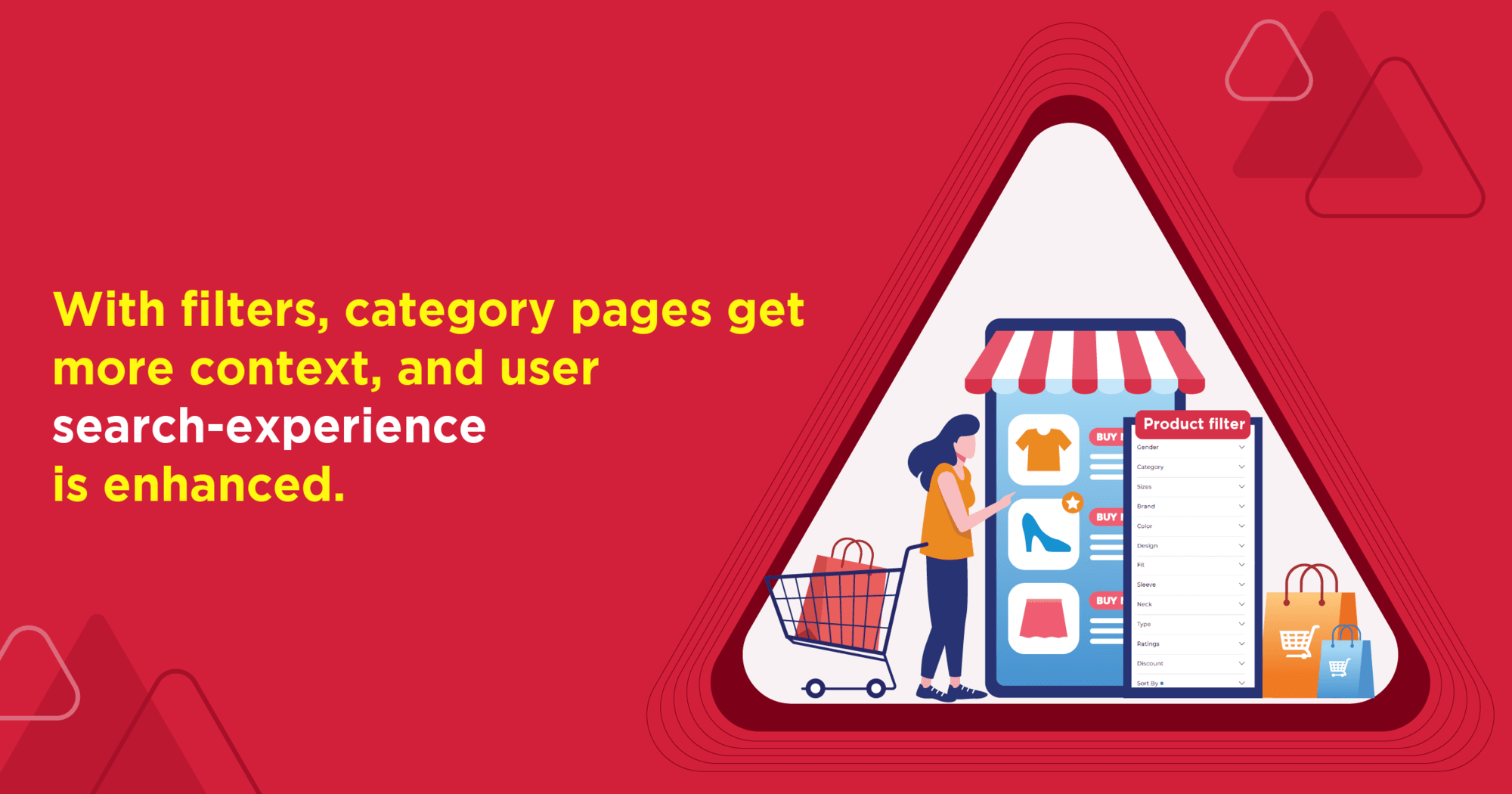
With Proper Filters and Schema Markup Enhance the User Search Experience
In order to avoid such UX bloopers, filters need to be set up optimally. Consider the manner in which your target buyers are likely to search (e.g., by price, by product materials, by colour, by configuration, etc.) – and add filters accordingly. With these filters, the overall category page will get more context, and user search-experience will be enhanced.
In general, buyers find it more convenient when they can easily grasp the navigation setup of the online store they are browsing. For this, adding schema markups – as product schema or breadcrumbs – is advisable. When the precise ‘location’ of product/category pages is clearly defined, browsing becomes that much simpler.
Consider The Mobile-Friendliness Of Your Category Pages
Mobile traffic accounts for ~72% of the total traffic volume on eCommerce stores. More than 57% conversions also take place via smartphones. In the busy present-day world, people are increasingly browsing and buying things on the go – and that’s exactly why your store should be designed with a ‘mobile-first approach’. While the category page content (visual and text) should be the same across devices – make sure that the category pages work properly on mobiles. By the end of 2024, the value of the global mCommerce sector will go beyond $618 billion. Your store should not get left behind.
Make sure that there is enough ‘breathing space’ in the content and the clickable elements of the category pages. If plugins are being used by the site, they have to be compatible with phone browsers. For mobile viewers, give precedence to the most relevant information/product details. Check the scrolling experience and mobile page loading speeds regularly.
By 2023, eCommerce has been projected to contribute around 23% of the total volume of retail sales. While the preference for buying products/services online is definitely gaining in momentum – there is a definite gap, as far as user-experience levels are concerned. Less than 2% of all visits to an eCommerce portal end up with a purchase, and problems with the ‘category pages’ is one of the prime causes of user drop-offs. For sellers, the onus is on availing expert eCommerce SEO services to optimise the category pages in particular, and the overall store setup in general. Doing so will help in taking up user-engagement levels – and conversions – manifold.
There are close to 30 million eCommerce websites worldwide at present. Unless your store has fully optimised category pages, it won’t be able to generate the desired levels of sales & revenue. You can’t afford that, right?

Ujjwal is an Assistant Manager- SEO at Brandwizz Communications. Expertise in Technical SEO and On-site SEO Optimization. Understanding of complex is an advantage. Passionate for Cricket & Travel. Keen to uncover new information.




